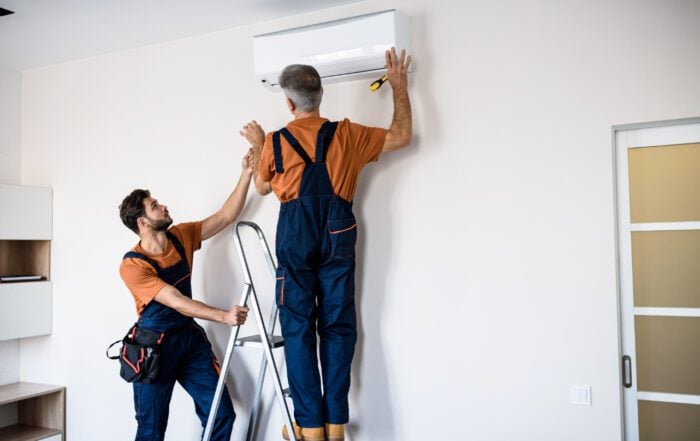What does your carbon footprint look like? What if there was an easy way to decrease your environmental impact with little to no effort and save money over time? Adding a solar panel system to your home could be the answer you’re looking for.
What Would It Take to Add a Solar System to Your Home?
Rising electric and non-renewable fuel costs (oil, propane, and natural gas) are forcing Ohioans to seek-out more affordable and efficient methods for supplying their homes with utilities. The advanced technology and availability of solar energy systems make them a wise addition to your home.
The first step in determining if this is a feasible option for your home: contact a qualified contractor for a solar consultation. The position of your home’s roof is important, but it’s not the only factor to consider. Your contractor will calculate the roof-to-sun exposure (surface area), roof position, and potential shade-causing objects such as chimneys, trees, and other structures. The roof must also be strong enough to handle the weight of the solar panels. Electrical grid specifications and power distribution should be considered in addition to building codes, restrictions, and compliance. You should also contact your homeowner’s association if you live in a private community. They may have certain bylaws regarding solar panels and other green energy initiatives.
Taking advantage of solar heating and cooling may ultimately save you money in the long run and reduce your carbon footprint. Doing your homework now can save you even more money later. And there may be local, state, federal or solar-friendly rebates and programs available when you’re looking to make the purchase.
Top Green Heating Alternative for Your Ohio Home
One of the best-known of all green heating alternatives, solar power is a viable heating option even in Ohio’s less-than-sunny winters. Surprising, but true. A solar heating system uses solar collectors (panels) to absorb and concentrate energy from the sun’s rays.
This energy is then used for a wide variety of utilities in your home, including radiant flooring. It can also provide for your household hot water needs. Solar heating is a particularly economical alternative if you currently use one of the “cost-inefficient” energy sources, such as electricity or oil.
Are You Ready to Make the Switch to Solar?
As a little history, the first silicon solar cell was invented in 1941 by a man named Russell Ohl. Thirteen years later in 1954, three scientists — Daryl Chapin, Calvin Fuller and Gerland Pearson — created the very first solar energy panel. Here we are, more than 60 years later, and solar panels are finally becoming a widely accepted form of powering the homes and businesses of our planet.
For many years, price was a deterrent for potential buyers. In 1977, the average cost of solar panels was $76.67/watt! Today, that cost is down to about $0.613/watt — quite the difference. So what does that mean for the average consumer like yourself? It means solar is finally an affordable option.
In fact, residential and commercial applications of solar panels end up paying for themselves over time. Because you’re not participating in traditional energy consumption from the local power company, you don’t have the monthly utility costs you had before. And states like Ohio offer net-metering, meaning power companies buy back excess power generated by private systems. And that leads to even more savings for you.
Need more reasons to consider solar?
- It’s earth-friendly, sustainable, renewable energy.
- It utilizes silent energy production in almost every application.
- Most solar systems are designed for broadband Internet-based monitoring.
- Monthly and annual solar energy production can be determined by proper planning and performing tests.
- Solar panels are typically maintenance free and covered by long-term warranties – they just need some minor cleaning a couple of times each year.
How to Switch to Solar – It’s Easier than You Think
So how do you get started?
There are many details to consider and your best bet is to reach out to a local green electrician for a consultation. But in the meantime, here are a few pointers on how to start making the traditional-to-solar energy conversion.
Step 1: Improve your energy efficiency
Your best option for a starting point is to do all you can to improve your home’s energy efficiency. Install energy efficient appliances and windows, and make sure your home is well insulated. That way, you are ready to optimize your use of the solar energy you collect.
Step 2: Consider a solar hot-water tank
Reduce your overall energy consumption by switching your hot-water tank from traditional electric to solar. Again, this works to optimize overall energy consumption, making the conversion to whole-property solar even more cost-effective over time.
Step 3: Hire a professional solar panel installation contractor
This is not the time to start DIY-ing projects. You want an expert on hand to make sure the panels are optimally placed to gather the most energy from the sun. And you want to ensure that trees, nearby buildings or homes, or other obstructions don’t compromise the efficiency or safety of the panels. So we’re here to help!
Give Yourself the Gift of Solar
Or, How Solar Energy Saves You Money Year Round
If solar power isn’t on your to-do list this year, you may want to make a quick addition. Making the switch to solar is an investment, for sure. But it’s an investment that you will reap the benefits of for many years to come. For the next 20 years, you could be powering your home with energy collected on site — and likely much longer than that. Most solar panels come with a 20-year warranty, but data shows that they continue to perform at a minimum of 80% capacity after that. So it’s a long-term investment with long-term savings.
But how soon will solar pay for itself? For a quick calculation, first, contact a licensed local solar-panel installation professional to get a cost estimate. Then take your average monthly electric bill and divide the estimate by that number. That should give you an approximate number of months. Of course, you’ll also want to factor in Ohio solar rebates and incentives, plus any federal programs that offer tax write-offs for energy efficiency. You’ll break even on your investment and begin saving money every month before you know it. And the best news is, it will already feel like savings each month with fewer bills to pay.
Have Any Questions?
If this is an emergency please call 440-937-9134.
Otherwise, please feel free to call us or submit this form to schedule an appointment for service or request an estimate. We will contact you shortly!



